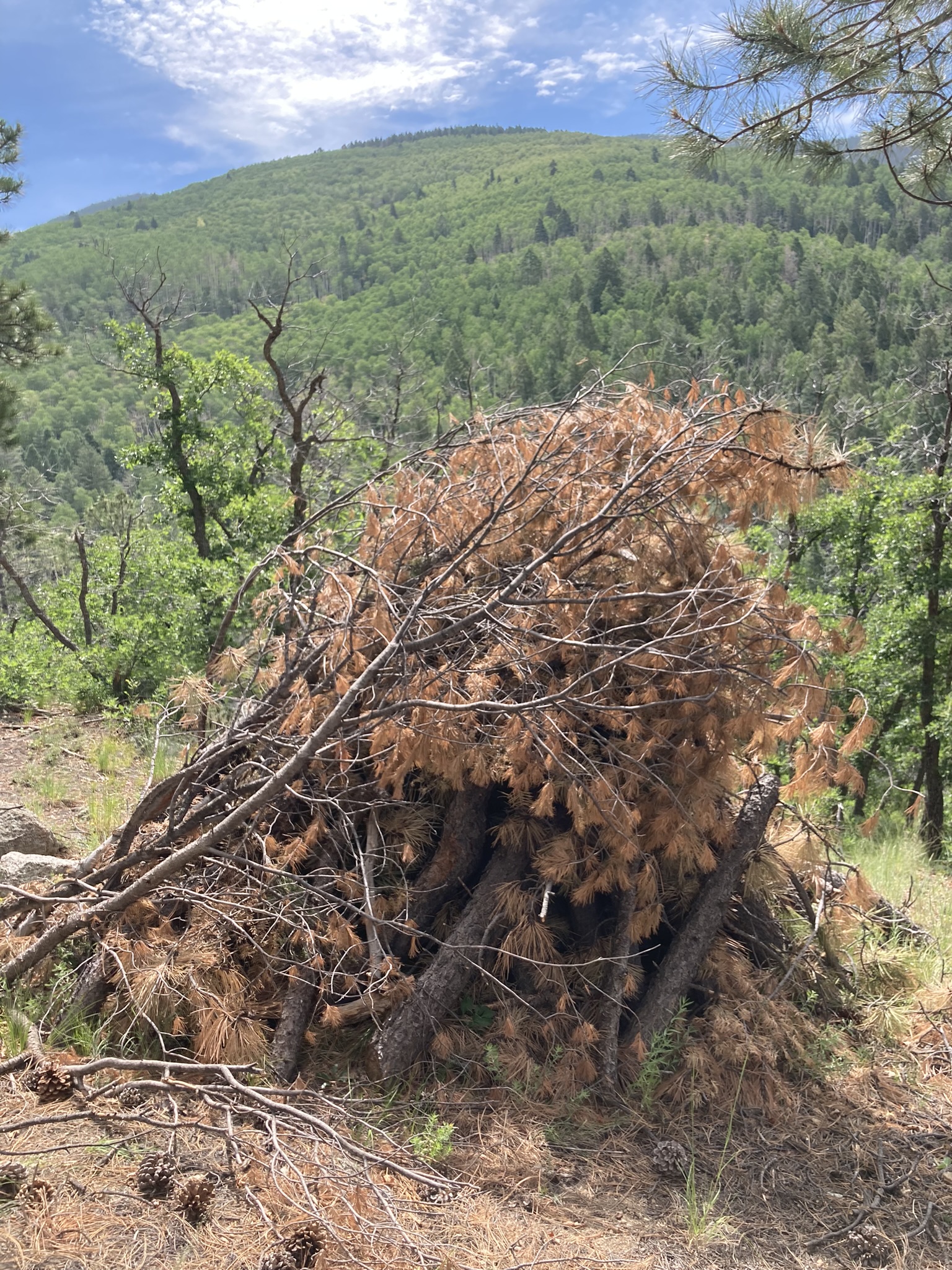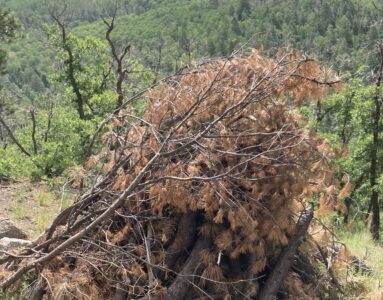LET THE WHITE PINES BE
by Sam Hitt
The Forest Service should not be cutting down white pines to prevent wildfire. These uncommon conifers which grace our mid-elevation forests are threatened by an exotic disease whose only defense is their genetic diversity. Every tree cut is a mark against their long-term survival.
Recognized by their bundles of five needles and large pendulous cones, two species of white pine commingle in northern New Mexico producing a unique hybrid population. Research suggests that this rich genetic legacy is slowly moving north as the climate warms and drys.
White pines are a favorite of mine. I planted a couple southwestern white pines on the north side of our home several decades ago. They have grown into large majestic trees like the ones I once saw at their center of diversity in the Sierra Madre of northern Mexico. I also have grown the smaller limber pines which ranges as far south as northern New Mexico and grows to great age — one near Red River is more than 1600 years old.
White pines produce large nutritious seeds favored by Clark’s nutcracker. The bird excavates seeds before the cones open and buries them in open terrain for later retrieval. Clark’s nutcracker, like its cousin the Pinyon jay, remembers the exact location of hundreds of seeds but a few escape detection to germinate and become trees. This remarkable bird-pine mutualism is threatened as the population of both birds is in sharp decline.
White pine blister rust is an exotic disease that poses an even more serious threat. Introduced to North America from Europe in the early 1900s it has nearly eliminated the majestic western white pine in the northern Rockies and is the principle reason the high-elevation white bark pine was recently listed as threatened under the Endangered Species Act.
Research has confirmed that the large, intermixed population of southwestern white and limber pines in New Mexico is providing genetic resistance to blister rust. Efforts are now underway to propagate rust resistant white pines for reforestation in burned areas. At the same time, millions of potentially resistant white pines are being cut and burned in piles to clear forests of what fire control officials see only as “fuel”.
The Santa Fe national forest is an outlier in having no binding measures to enhance and maintain the unique diversity of the white pine complex. In 2009, it also ignored the urging of scientists to spare white pines from forest clearing in Santa Fe’s municipal watershed, and more recently its own experts who cautioned against excessive clearing that allows shrubs, which are alternative hosts for blister rust, to proliferate.
This year we mark the passing of a century since Aldo Leopold convinced his supervisors in the Forest Service to forego road building and logging in what became the Gila Wilderness. But Leopold was also a pioneer in the art of healing abused land. There is photo from the 1940s of Leopold admiring an eastern white pine, one of thousands he planted to restore his eroded Wisconsin farm.
Leopold advised the ecologists of his day “that the first rule of intelligent tinkering is to keep all the pieces.” Like others in the 1920s, he was critical of the Forest Service when it told landowners to cut down the last American Chestnuts for their valuable wood as these majestic giants were being eliminated from the eastern forests by another exotic disease. The genetically resistant “redwoods of the east” were likely lost forever when the agency ignored this advice.
To our Forest Service friends today, we urge them not to repeat the past and let the white pines be.
Preserving Southwestern forests and wildlife

